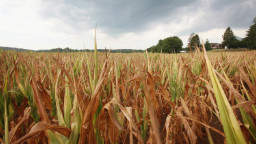Financial TimesFears grow for rise in food prices
By Jack Farchy and Heba Saleh,
 The increase in grain prices is already being felt around the world. In Indonesia, the tofu industry has threatened to strike over rising soyabean prices; in Mexico, the cost of corn tortillas is on the rise; and Iran last week witnessed a rare protest over the cost of chicken.
The increase in grain prices is already being felt around the world. In Indonesia, the tofu industry has threatened to strike over rising soyabean prices; in Mexico, the cost of corn tortillas is on the rise; and Iran last week witnessed a rare protest over the cost of chicken.
But the economic effects of the sharp rise in agricultural commodities have barely begun. A jump of 30-50 per cent in benchmark corn, wheat and soyabean prices has revived memories of the world’s last food crisis in 2007-08, and large consumers from Egypt and Morocco to South Korea and Taiwan are bracing for a renewed bout of food inflation.
Marc Sadler, head of agriculture risk management at the World Bank, says: “For sure there is growing concern across the world from developing countries about what this may mean for them.”
The biggest impact is likely to be on countries dependent on agricultural imports. How they react to the rise in prices will be crucial, analysts say: if, as in 2007, they respond by stockpiling or panic-buying, that could add fuel to the rally.
“The big concerns are countries with large net food imports, and some of the poorer net food importers in sub-Saharan Africa,” says Thomas Helbling, an economist at the International Monetary Fund who specialises in commodities.
So far, however, there are few signs of panic. Indeed, some countries have been putting off purchases in the hope that prices may fall, traders say. “They are just hoping they can temper their purchases until expectations of another harvest,” says Keith Flury, agricultural commodities analyst at Rabobank.
However, this reticence means they may be forced to pay up. Countries including Morocco, Jordan, Iraq and South Korea have come to the market to buy in the past week, traders say.
“They have to buy their needs for the next two months,” says a senior grain trader. “At the end of the day these governments have to secure the food. Of course it is going to put a lot of stress on finances.”
The impact will vary from country to country. Those that need to import less — either because of bumper domestic crops or judicious stockpiling when prices were lower — will be less affected.
Nomani Nasr Nomani, deputy head of Egypt’s General Authority for Supply Commodities, the state wheat importer, said Egypt’s wheat imports would be about 20 per cent lower than last year, thanks to a record domestic crop.
He said wheat stocks were sufficient until the end of January, but that GASC would watch price movements to make purchases. “Of course we won’t stay out of the international market until the end of January, but there is no urgent demand now to purchase large quantities,” he says.
However, other countries have not been so fortunate. Morocco, for example, is likely to have its smallest wheat crop in five years after dry weather, according to US Department of Agriculture forecasts, while India’s farmers are suffering from a weak monsoon season.
Moreover, the strength of the dollar is causing an additional worry. Unlike in 2007-08, when the rise in grain prices coincided with a weaker dollar, this time the reverse is true.
That raises costs for importers. For example, while benchmark Chicago corn futures are currently trading 6 per cent above their 2008 peak in dollar terms, when priced in Egyptian pounds corn is 21 per cent above its 2008 high, and in Mexican pesos it is 37 per cent higher.
“If you are an importing country not only are you paying higher prices, but also you have to deal with buying more dollars,” says Abdolreza Abbassian, senior grains economist at the UN Food and Agriculture Organisation. “It may be that we see some economic problems happening again.”
The issue is particularly acute for Egypt, which has suffered a sharp drop in foreign exchange reserves in the wake of last year’s revolution.
“Egypt has balance of payments problems of its own, irrespective of this food price shock,” says Neil Shearing, chief emerging markets economist at Capital Economics, a consultancy. “It couldn’t have come at worse time.”
Ultimately, however, the most severe impact will be on the world’s poorest, who spend almost all of their income on food. Not only do higher prices reduce their ability to buy food, but they also mean that aid agencies can buy less food to assist them. As Arif Husain, deputy chief of vulnerability assessment for the World Food Programme, says: “It’s a double whammy.”
.






